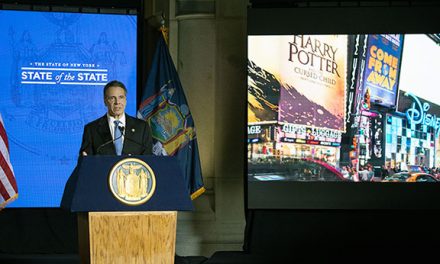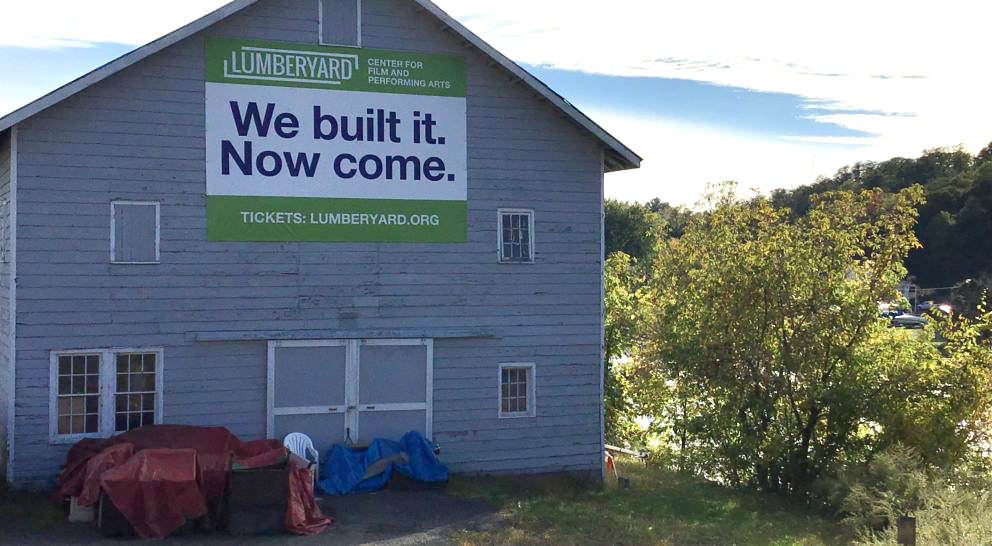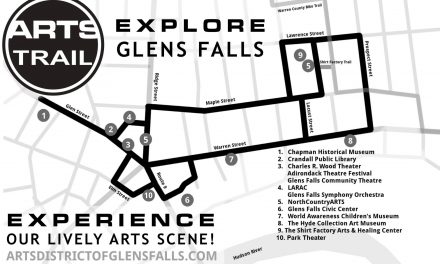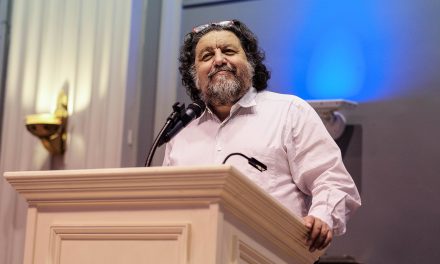“We used to say, ‘Oh, we’re this far from Lake George and this far from Saratoga,’” says Kate Austin-Avon, owner of Advokate, LLC, a business empowerment and marketing firm in Glens Falls. “That’s what Glens Falls had going for it.”
But that was then, and this is now. Change is afoot in a place Look Magazine once called “Hometown U.S.A.,” thanks in part to a project for which Austin-Avon serves as administrator: the Arts District of Glens Falls. The District is an association of 14 arts organizations all located within a single square mile of downtown—not bad for what Austin-Avon refers to as an “unassuming blue-color town” with a population of less than 15,000. The Arts District encompasses theatre, music, museums and it is currently in the process of building a formal “arts trail” intended to guide the way through the myriad culture that this unique Capital Region community has to offer.
When a 2013 HUD study identified the arts as a prime economic driver for Glens Falls, Ed Bartholomew, president of the Economic Development Corporation in Warren County, got in touch with a handful of arts organizations in the city; Austin-Avon was among those who began meeting and brainstorming ideas.
At the time, she was managing the Shirt Factory, a home and studio space for artists that formerly operated as an actual shirt factory—and a major employer in the town—for nearly a century. She and the building’s new owner, Eric Unkauf, decided to offer an opportunity to pool resources and purchase advertising for multiple groups: the Shirt Factory, the Charles R. Wood Theatre, the World Awareness Children’s Museum and LARAC, the Lower Adirondack Regional Arts Council. “We all happened to be friends,” Austin-Avon says. “We went in on a Facebook page (with) a hundred dollars worth of advertising, because that what we could scrape together out of our budgets.”
From such humble beginnings, the idea for the Arts District was born. More neighborhood arts organizations joined as partners; events such as “Paint Out,” in which artists were encouraged to paint in open-air spaces throughout the city, were held to build awareness. A related effort, The Arts Coalition (TAC), promoted a series of lectures through its “TAC Talks” bulletin. TAC merged with the Arts District in late 2014. “We wanted to continue to market as a group,” explains North Country Arts board member Jacquiline Touba. “So that if somebody came up to the Hyde, they would realize two blocks away is both the Shirt Factory and the Children’s Museum. Or you go another block further and you’ve got the Lower Adirondack Regional Arts Council.”
It was decided to capitalize on the group’s momentum and “do something big,” as Austin-Avon explains. To that end, Touba wrote a grant in early 2015 requesting $50,000 in funding from the NEA to establish an Arts Trail connecting all of the member organizations. That request, however, was denied. The group subsequently lost some of its momentum, but continued to meet.
“The idea was too good to give up on,” Austin-Avon says. “We decided to rework the budget and figure out how to run it on a shoestring.”
Their persistence paid off when opportunity presented itself the following year: The Downtown Revitalization Initiative (DRI), a new program launched by Gov. Andrew Cuomo, had identified 10 communities around the state as “ripe for development.” Glens Falls was among them. Bartholomew again reached out to the group, suggesting that their Arts District concept was a fit for the DRI. In summer 2017, Glens Falls was announced as one of the recipients of $10 million in funding to develop a downtown strategic investment plan and implement key projects to advance a vision for revitalization.
Yet the group’s $125,000 slice of that pie has yet to materialize. Efforts to fulfill state requirements—such as sending out projects for multiple bids before work can proceed, following procurement procedures established by the city, raising a percentage of money to match the state’s contribution and so on—has meant a waiting game for the Arts Trail. Yet the group hasn’t been idle; committees have been established, banners and stenciled sidewalk markers to “connect the dots” along the length of the trail have been designed. Colorful, custom-made bicycle racks also are planned. Originally, there was a plan to build large-screen kiosks to give directions along the trail; the group decided this goal would be better served by a mobile website. “Years have gone by and everybody’s on their phones; nobody’s looking up to look at a kiosk,” explains Austin-Avon. “The kiosk is in your pocket,” Touba agrees.
Already, the effort has had an impact. “More and more, we are seeing tourists come not to ‘the Lake George region,’ but to Glens Falls,” Austin-Avon says. In the case of the Shirt Factory, she adds, artists have moved in because of its beautiful light and low rent; Unkauf has recognized and embraced the space’s potential as an “artists’ building” and grown it from a handful of resident artists to nearly 100. For some of the city’s bigger players on the arts scene, collaboration has meant greater connection to the community — and the expectation of increased visibility and attendance as the district continues to evolve.
“As the next two years unfold, we certainly expect to see more traffic at concerts, more visitor traffic to the website through the Arts District portal and an increased awareness among our local citizenry of the many activities of all our arts organizations,” says Jennifer Brink, executive director of the Glens Falls Symphony. “The collaboration has already made it possible for the arts administrators in town to get to know each other far better than we would have otherwise,” she adds.
This is a curious dynamic that seems to run counter to what one might expect from similarly-focused organizations operating in such close proximity. “There’s some friendly competition,” Austin-Avon says. “Obviously, we’re all after money. Everybody’s struggling right now and needs to stay alive.” But, she adds, “there’s really not the kind of tension you might think (from) getting competitors in a room together. There’s much more of a camaraderie.”
She points to a willingness among leaders of the various organizations to share knowledge with one another, such as advice on what tools they’re using and which are most effective. “A rising tide lifts all boats,” she notes.
It would appear that the very thing that has made Glens Falls a tough sell—its isolation in the northern periphery of the region—has also served as its greatest strength. Being removed from the beaten path has forged a collaborative spirit where, as Austin-Avon puts it, “we all kind of have to hold hands and band together.” Touba agrees. “A lot of the organizations are working together now,” she says. “They meet monthly, they know each other on a personal basis and there’s a lot more collaboration going on.”
“Collaborations of all kinds have emerged out of this collegiality,” adds Brink. “It has also led to increased cooperative efforts in scheduling events and otherwise assisting each other to coordinate how we do business… I believe more people are attending more events across the different disciplines, and we are all gaining audience.”
“Even if we don’t have the Trail, it doesn’t matter,” Touba adds. “Things are still moving forward.”
One forward move for the group has been transitioning from working fully independently to working as an independent association under the umbrella of the Glens Falls Collaborative. The latter is a tourist-focused organization, over 120 members strong, that hosts networking events and festivals: activities such as the summertime restaurant-sampling street stroll, Take A Bite, as well as wintertime candlelight tours of the Hyde.
“People are already coming to the area to see the Adirondack Theatre Festival and the Hyde Collection,” says LARAC executive director Candice Frye. “Now they have the knowledge of spending the day or weekend in Glens Falls and enjoying all of the arts.”
“A lot of what is happening is things are coming back,” Austin-Avon adds. Downtown shops are reopening. Restaurants are offering wider diversity. Developers and investors are pouring in resources, creating luxury apartments, revitalizing the Queensbury Hotel and the Park Theater.
“The whole point is, you come to Glens Falls and you say, ‘Ah, this is an arts town,’” Austin-Avon says. “But you have to go inside to figure that out. This is about bringing public art to the forefront.”
That aspect will perhaps be most visible through the group’s new idea to incorporate outdoor sculpture. “The plan is to have a really striking public art trail along one section,” says Austin-Avon. “The public art component of this venture is the most exciting change that I look forward to,” agrees Frye. “(When) visiting cities throughout the world, their public art and how it represents the community always has the greatest impact on me.”
“We are building something here,” Austin-Avon adds. “But it wasn’t so long ago that downtown was really a ghost town. We’re undergoing a renaissance here, and it’s kind of a beautiful thing.”





